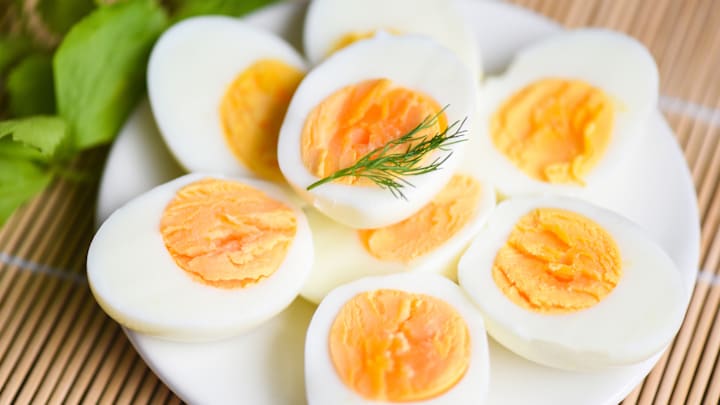Due to particularly nasty outbreaks of bird flu, egg prices in the U.S. have climbed past $4 a dozen and reached $7 in New York and $8 in California. Waffle House has added an egg surcharge and someone heisted a trailer with $40,000 worth of eggs from an organic farm in central Pennsylvania.
Now that eggs are the new truffles, you might want to invest more time and thought in their preparation. A group of Italian engineers has your back.
Publishing their findings in the journal Nature Communications Engineering, researchers at the University of Naples and colleagues claim to have developed the perfect method of boiling an egg.
They started with a fundamental problem of egg boiling: The yolk and the white cook at different temperatures, the white in water that’s 85°C (185°F) and yolk at 65°C (149°F).
Most of us make peace with this fact and learn to accept hard-boiled eggs, which come out of boiling water after about 10 minutes with fully solidified white and yolk, or soft-boiled eggs, which still have runny yolks after five or six minutes. The brunch chefs among us might go for sous vide eggs, with set whites and rich, creamy yolks after 40 minutes or so in water in sub-boiling temperatures of about 60°C (140°F).
But these engineers thought there had to be a better way, so they ran the dilemma through computational fluid dynamics software. The simulations suggested a method of alternating the eggs between one pan of water, kept at the boiling point of 100°C (212°F), and another, kept at a lukewarm temperature of 30°C (86°F). For best results, the computational model suggested transferring an egg from one to the other every two minutes for exactly 32 minutes. The researchers dubbed this “periodic cooking.”
They boiled eggs to these specifications, and—because o dio mio these people meant business—they evaluated the eggs’ chemical properties using nuclear magnetic resonance spectrometers. Under such high-tech scrutiny, the periodic-cooked eggs exceeded sous vide, soft-boiled, and hard-boiled eggs in measurements of texture, consistency, and nutritional properties. Chemical analysis suggested that the periodically cooked egg yolks contained more polyphenols, a beneficial micronutrient.
In the paper, the scientists conclude that their “successful cooking experiment ... might inspire new fancy recipes, proving how knowledge of the science behind simple problems can improve even the slightest bits of our daily life, like the simple act of eating an egg.”
It also shows that cooking eggs can be as costly in time and thought as they are in money.
Read More Fascinating Food Facts:
